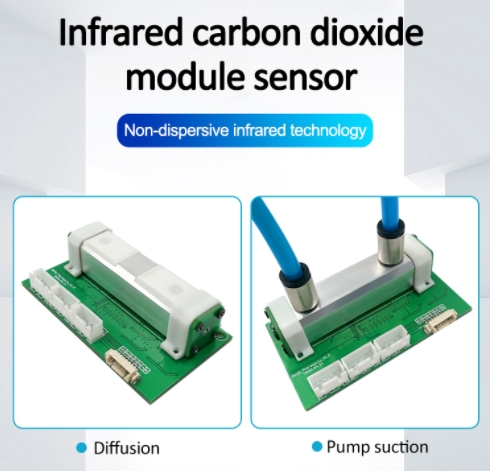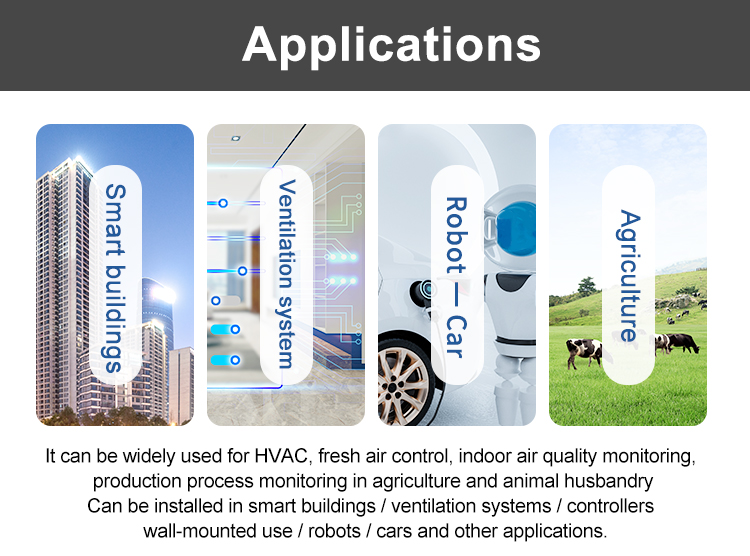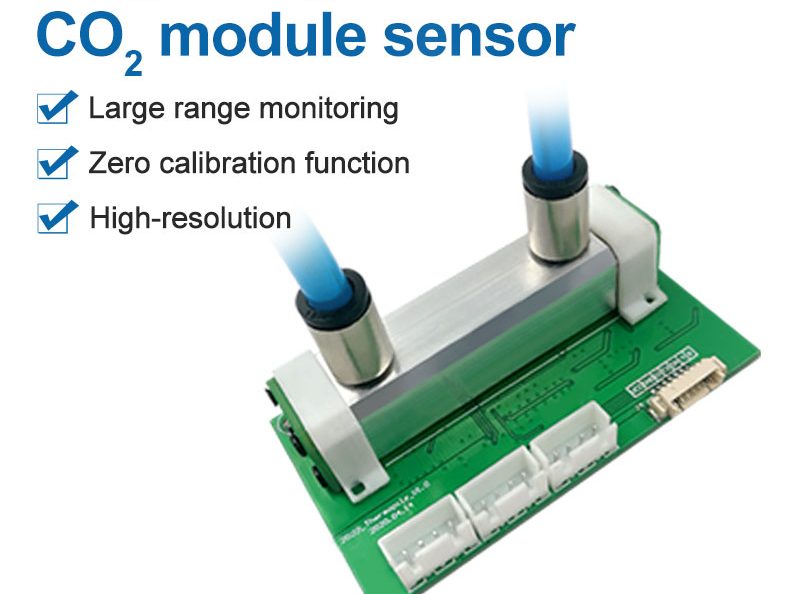In the pursuit of improved indoor air quality environmental monitoring, the Non-Dispersive Infrared (NDIR) CO2 sensor has become as a critical instrument. This advanced technology plays an active role in measuring carbon dioxide levels with remarkable precision, enabling effective climate control, enhancing human health, and facilitating sustainable practices across various sectors. This essay delves into the workings of NDIR CO2 sensors, their applications, benefits, and future prospects.
Understanding NDIR CO2 Sensors
An NDIR CO2 sensor is a scientific device that utilizes non-dispersive infrared radiation to measure the concentration of carbon dioxide gas in the atmosphere. It operates on the principle that CO2 molecules absorb specific wavelengths of infrared light. When infrared light passes through a sample of air containing CO2, some of this energy is absorbed by the CO2 molecules. By comparing the intensity of the incident light to the transmitted light, the sensor can calculate the amount of CO2 present based on the known absorption characteristics of the gas.

The sensor incorporates a light source that emits IR light across a range of wavelengths, an optical filter that isolates the wavelengths absorbed by CO2, a measurement chamber where the air sample is introduced, and a detector that measures the intensity of transmitted light. The reduction in light intensity indicates the concentration of CO2. Due to its specificity and reliability, NDIR technology has become the gold standard for CO2 sensing.
Applications and Benefits of NDIR CO2 Sensors
Indoor Air Quality (IAQ) Management: NDIR CO2 sensors are pivotal in ensuring optimal IAQ in buildings such as homes, offices, schools, hospitals, and public spaces. High CO2 concentrations can lead to drowsiness, reduced cognitive function, and even health issues over time. With real-time monitoring, HVAC systems can be automatically adjusted to maintain CO2 levels below recommended thresholds, improving comfort and productivity while minimizing energy waste from overventilation.

Climate Control Systems: Advanced building automation systems incorporate NDIR CO2 sensor to manage ventilation rates according to occupancy levels and CO2 emissions. This demand-controlled ventilation helps balance fresh air supply with actual needs, conserving energy and reducing greenhouse gas emissions from heating or cooling.
Greenhouse Horticulture: In agricultural settings, particularly in greenhouses, precise CO2 measurement is crucial. Elevated CO2 levels can stimulate plant growth, increasing yields and efficiency. NDIR CO2 sensors help growers maintain ideal conditions, optimizing crop production and resource utilization.
Occupancy Detection and Energy Efficiency: Integrated with other sensors and analytics, NDIR CO2 sensors can also serve as proxies for occupancy in smart buildings. They detect increases in CO2 due to human respiration, which can trigger lighting, HVAC, and security systems to respond accordingly, contributing to significant energy savings.
Environmental Monitoring and Climate Research: Scientists employ NDIR CO2 sensors in outdoor environments to track atmospheric CO2 levels, monitor industrial emissions, and study climate change patterns. These data points provide invaluable insights for policymakers, urban planners, and researchers.
Transportation and Aerospace: In confined spaces like aircraft cabins, submarines, or spacecraft, NDIR CO2 sensors ensure that occupants breathe air with safe CO2 levels. They also play a role in studying the Earth’s atmosphere from above and contribute to the development of cleaner transportation technologies.
Challenges and Future Prospects
Despite their numerous advantages, NDIR CO2 sensors face challenges such as long-term stability, accuracy at low CO2 concentrations, interference from other gases, and calibration requirements. However, ongoing research and technological advancements continue to address these concerns, leading to more robust and cost-effective sensors.

Future directions for NDIR CO2 sensors include miniaturization, integration with IoT platforms, and increased compatibility with wireless communication protocols. These developments will facilitate wider adoption and enable more sophisticated applications such as wearable devices for personal exposure monitoring, real-time citywide air quality mapping, and advanced predictive analytics for environmental management.
Moreover, the use of NDIR CO2 sensors in conjunction with machine learning algorithms could pave the way for smarter, autonomous systems capable of anticipating and responding to changes in indoor and outdoor environments proactively.
Conclusion
In conclusion, the NDIR CO2 sensor is a transformative tool driving improvements in indoor air quality, energy efficiency, and environmental sustainability. As our understanding of the impacts of CO2 on human health and the environment deepens, the importance of these sensors will only grow. Their continuous evolution and integration with cutting-edge technologies will empower us to create healthier living and working spaces, foster responsible consumption, and contribute significantly to global efforts against climate change.
